Physical Address
304 North Cardinal St.
Dorchester Center, MA 02124
(see Fig. 26.1A–D )
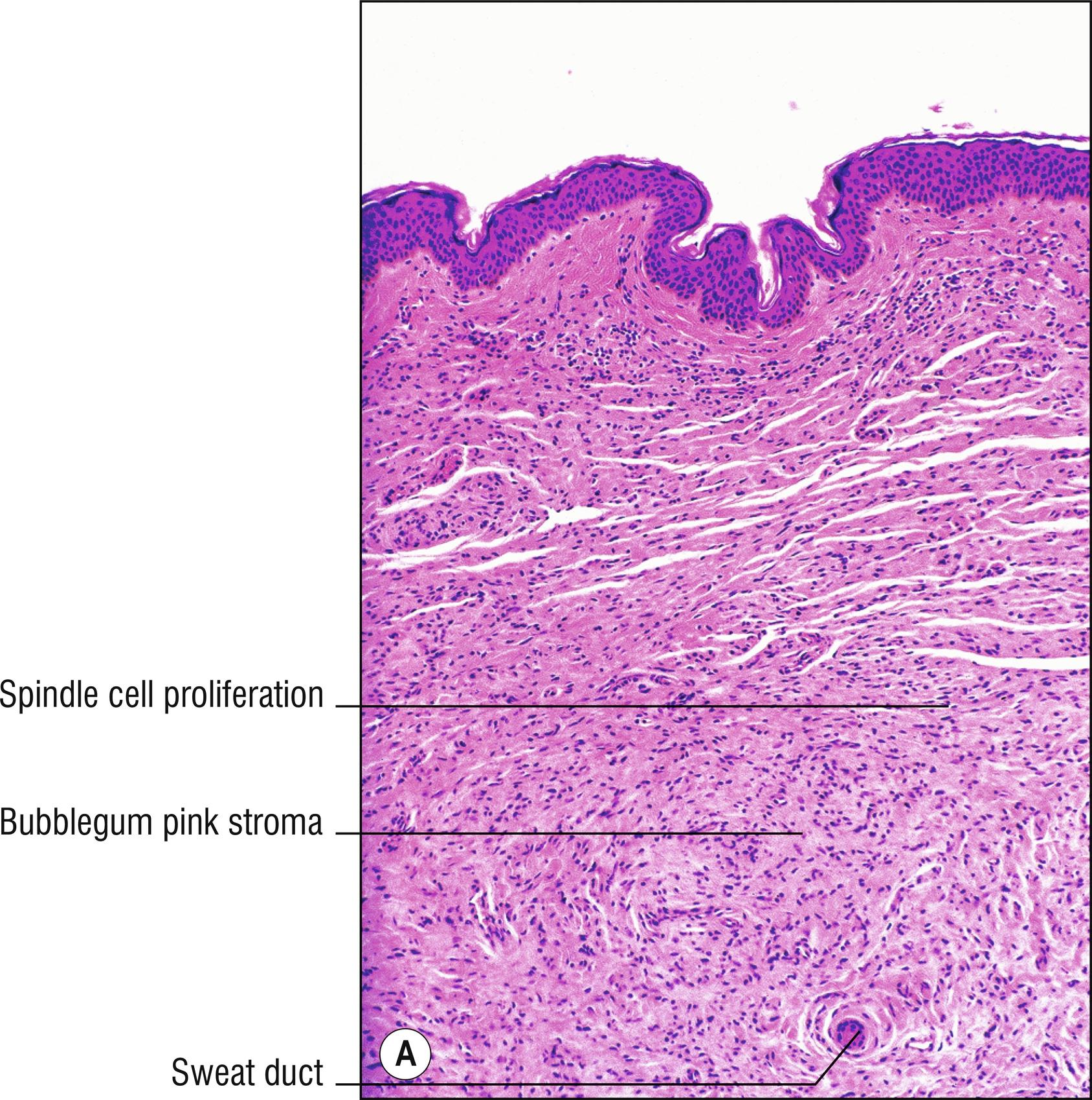
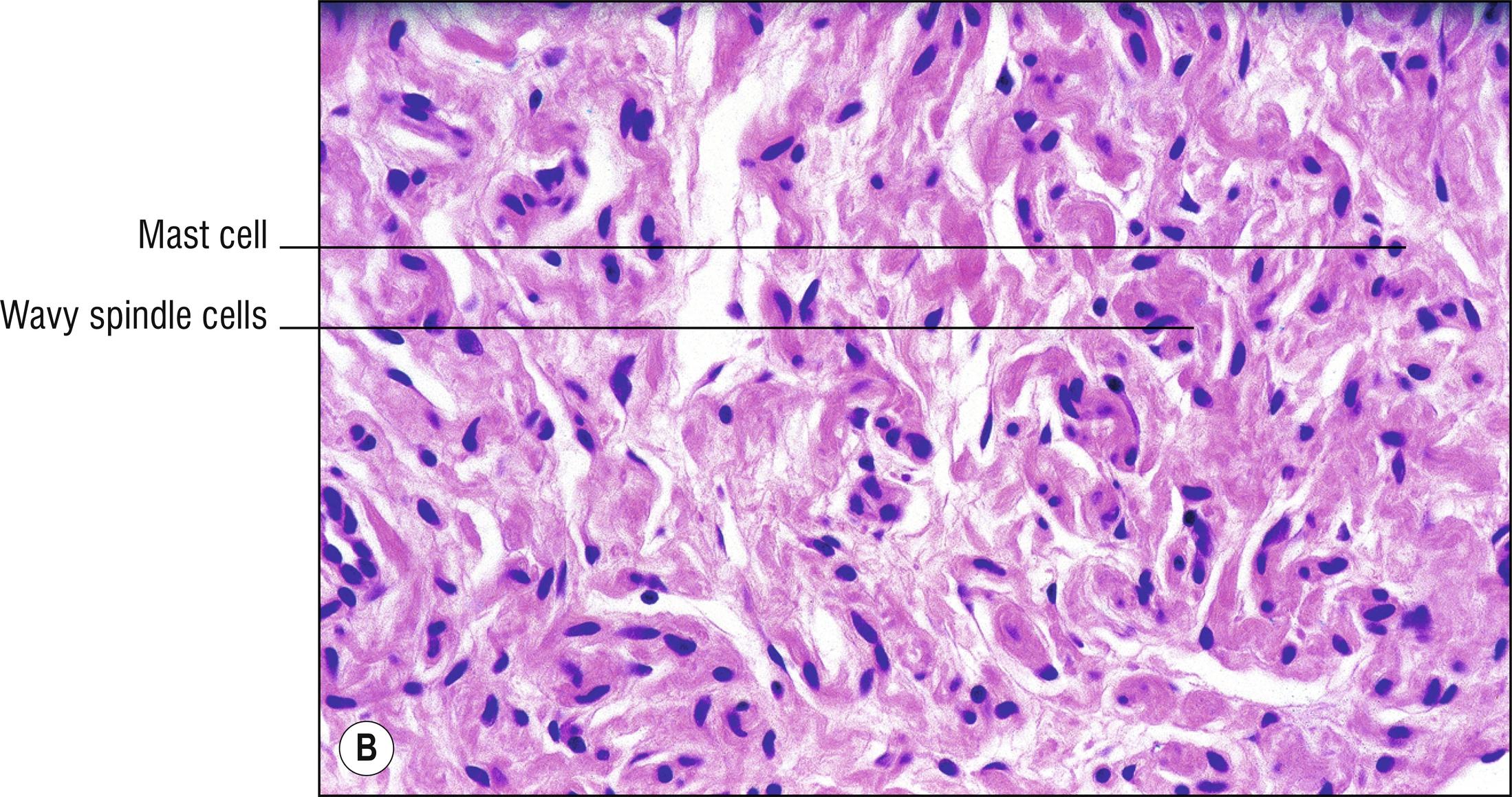
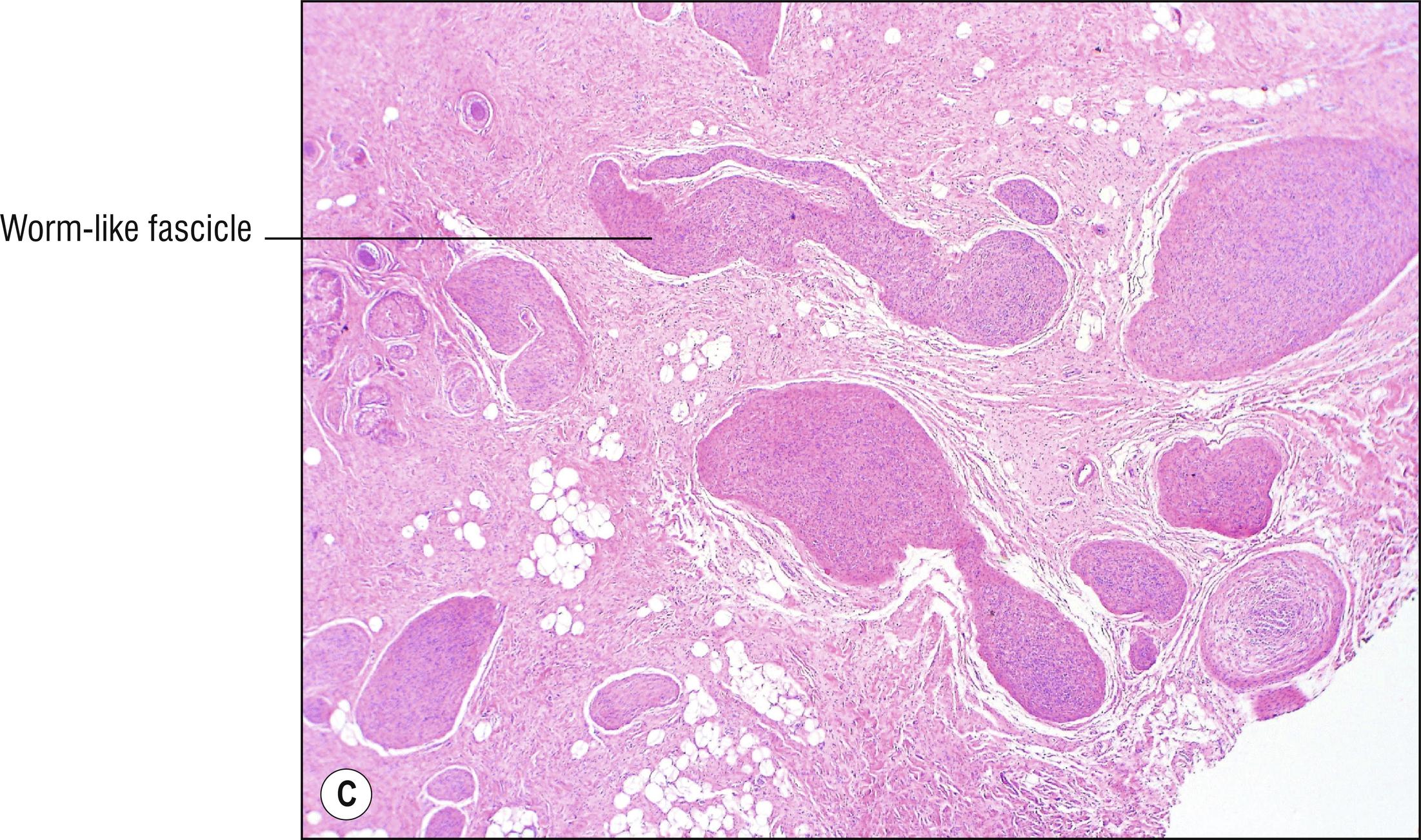
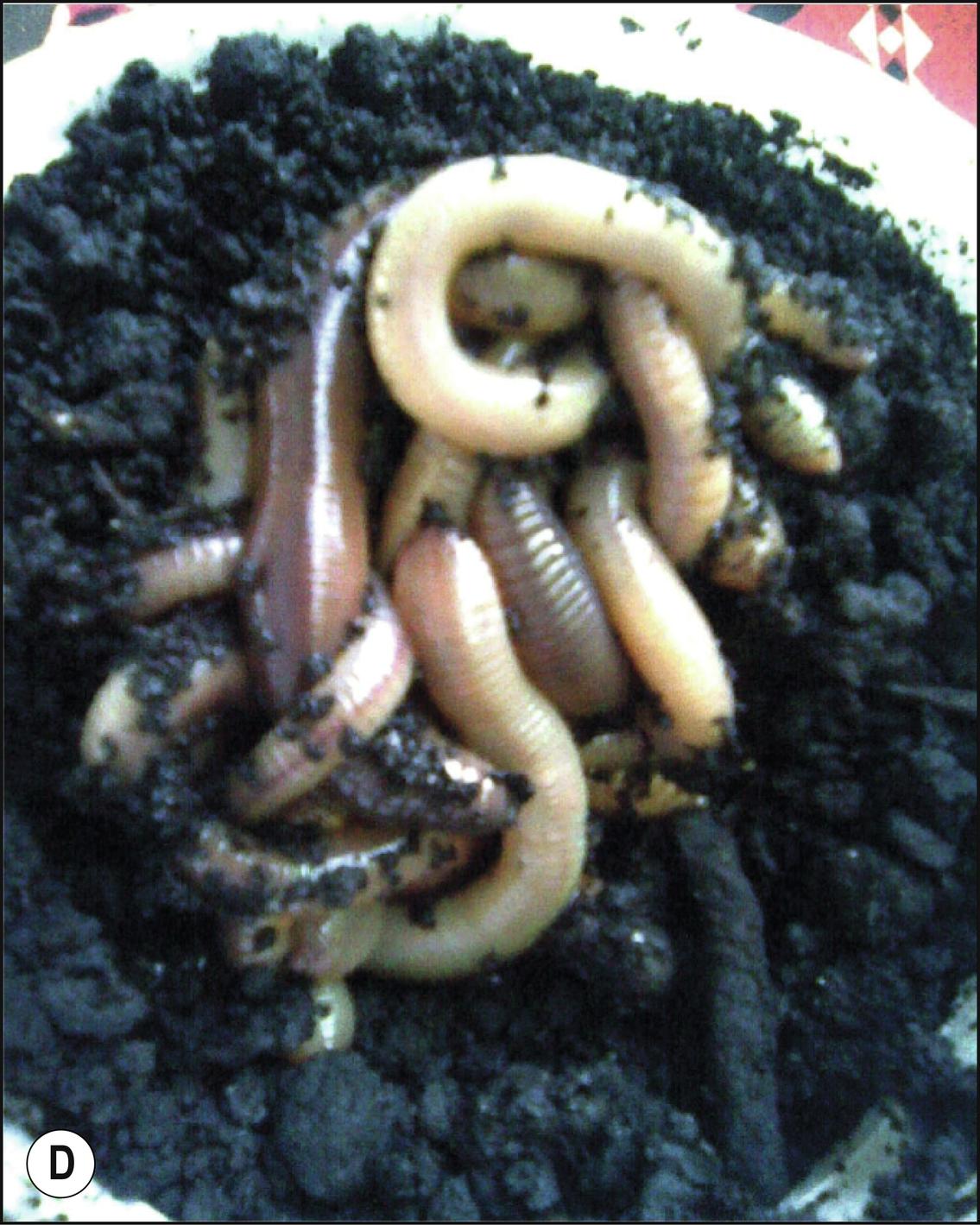
Common soft , skin-colored or violaceous papules or nodules (1.129), pedunculated (1.106), or subcutaneous (1.135), may exhibit “buttonhole sign” whereby they can be invaginated with finger compression.
Somewhat demarcated nodule in the dermis or subcutaneous tissue of spindle cells with wavy nuclei (diving dolphins), sometimes in strands said to resemble shredded carrots
Pale “bubblegum” pink stroma, mucinous or myxoid
Mucinous stroma (1.83) stains positive for acid mucopolysaccharides ( Chapter 30 )
Mast cells common (1.78)
Positive staining for S-100, CD34, PGP9.5, factor XIIIa, myelin basic protein, and neurofilaments. Bodian stain rarely performed, but should reveal axons (a type of neurite) since the neurofibroma is a neoplasm of the entire peripheral nerve, also including Schwann cells, endoneurial fibroblasts, and perineurial cells.
Subcutaneous NF: subcutaneous mass, often has a true capsule.
Diffuse NF: diffuse infiltration of dermis or subcutaneous tissue.
Pigmented NF: melanin pigmentation (understandable since melanocytes, like Schwann cells, are from neural crest).
Blue–red macule NF: red or blue tint due to increased thickened blood vessels, usually with NF-1 (see below).
Pseudoatrophic macule NF (neurofibromatous dermal hypoplasia): slightly depressed NFs due to decreased reticular dermis: NF tissue more whorled around vessels and nerves.
Plexiform NF: large “ bag of worms “ mass , nearly pathognomonic for NF-1.
Neurofibromatosis type I (NF-1, von Recklinghauseńs disease, peripheral neurofibromatosis, the most common type of NF): autosomal dominant, mutation in neurofibromin (NF1) gene on chromosome 7, two or more neurofibromas or a plexiform neurofibroma, six or more café-au-lait macules (20.2) that are greater than 1.5 cm in adults or 0.5 cm in children, axillary or inguinal freckling (Crowe sign, onset in childhood, present in 90% of adults), optic gliomas (15% of patients), Lisch nodules (iris hamartomas, 15% of children by age 6 years old, 95% of adults), osseous lesions such as sphenoid dysplasia, hypertension due to renal artery stenosis or pheochromocytomas, dysplasia of long bones such as the tibia (10% of patients), kyphoscoliosis (less than 10% of patients), sometimes seizures or below average intelligence.
Neurofibromatosis type II (NF-2, acoustic neurofibromatosis, central neurofibromatosis): mutation in gene encoding neurofibromin-2 (merlin). Hereditary bilateral eighth nerve masses, neurofibromas, meningiomas, gliomas or Schwannomas, fewer café-au-lait macules.
NF-3, NF-4, NF-8: these terms are no longer in vogue (atypical NF variants).
Segmental neurofibromatosis (NF-5, now called segmental NF-1): NFs or café-au-lait macules restricted to one sector of the body, without crossing the midline, usually without a family history.
NF-6: familial café-au-lait macules (autosomal dominant, without neurofibromas and without other NF-1 manifestations, rare).
NF-7: schwannomatosis (26.2).
NF-1 with JXG (7.10), appears to predispose to juvenile chronic myelogenous or myelomonocytic leukemia (24.16).
Dermatofibroma (27.1): indurated, more likely to be brown, more fibrotic stroma, less demarcated, epidermal hyperplasia, tabled rete ridges.
Leiomyoma (29.6): blunt-ended cigar nuclei.
Schwannoma (26.2): Verocay bodies, more likely to be encapsulated in subcutaneous tissue, more likely to be CD34 negative, and CD56 + and calretin positive, no axons with Bodian stain (rarely done).
Neuroma (26.3): more delineated nerves.
Neurotized melanocytic nevus (20.5): melanocytic nests, melanin, MART-1 +, myelin basic protein negative.
Desmoplastic melanoma (20.11) lacks the CD-34 + fingerprint pattern of NF and perineurioma (26.3). Desmoplastic melanoma usually has more solar elastosis, more mitoses, and an overlying lentigo maligna in the epidermis.
Other spindle cell tumors (1.131).
(see Fig. 26.2A,B )
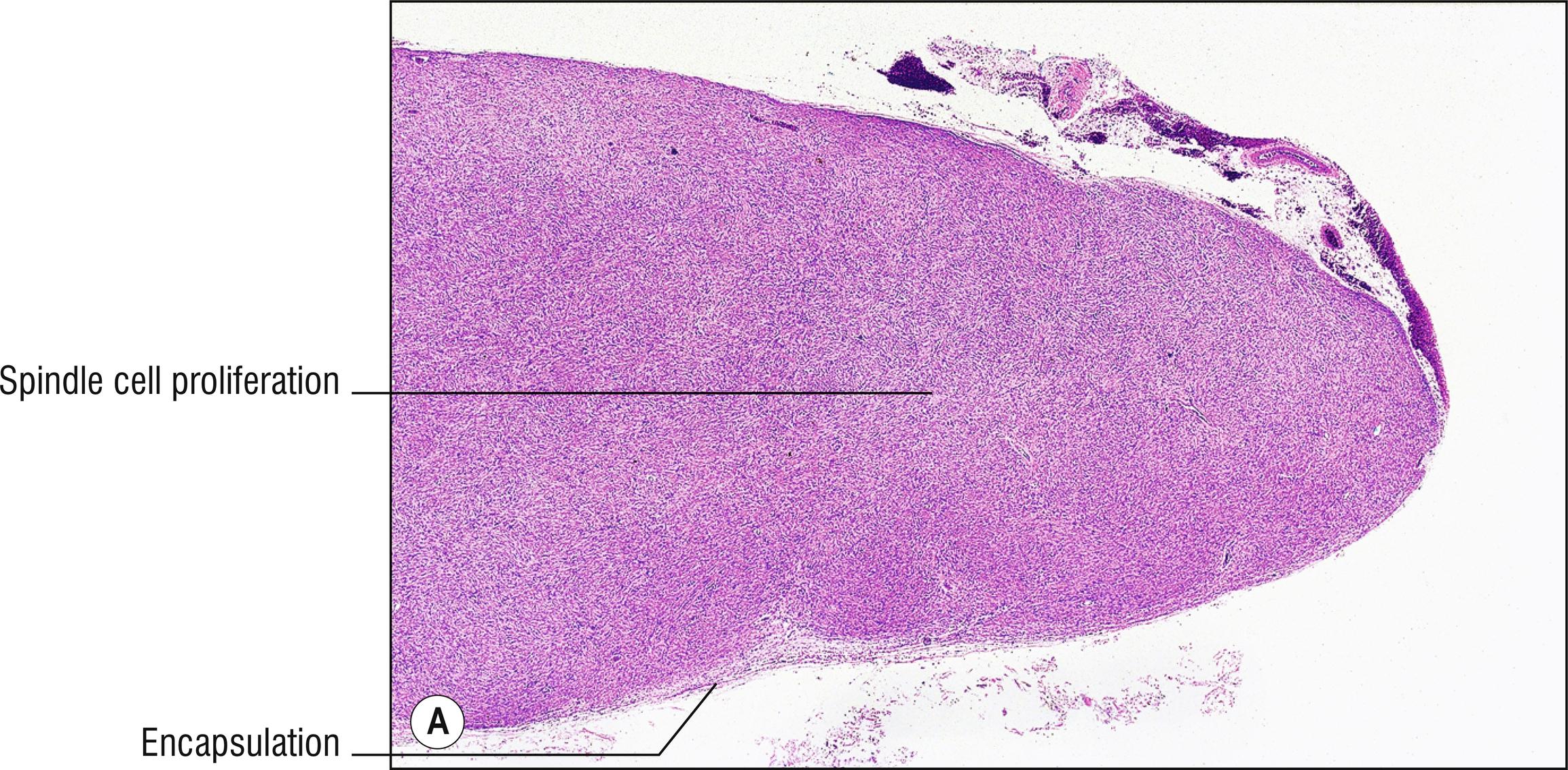
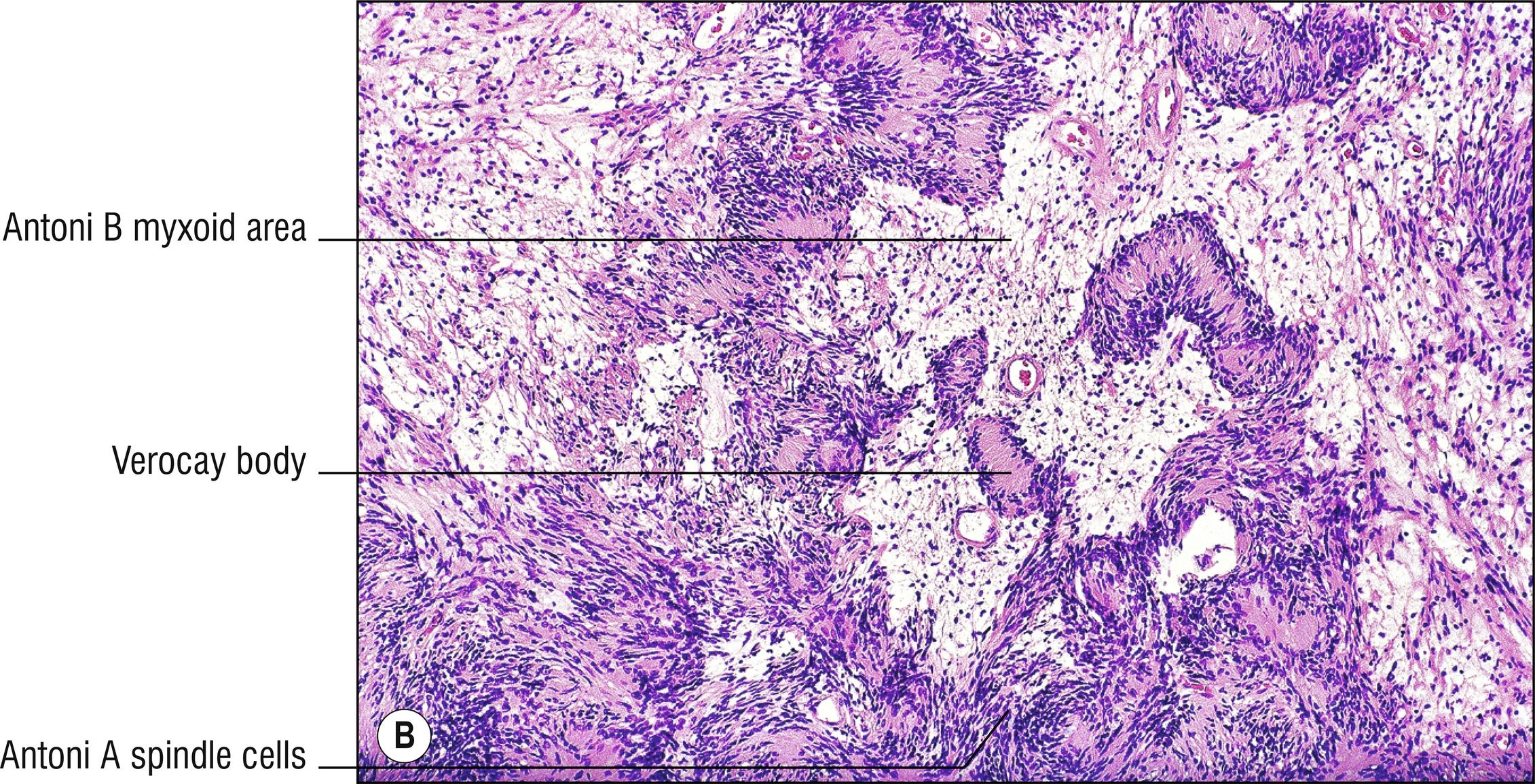
Uncommon neoplasm of the Schwann cells of the nerve sheath (not the entire peripheral nerve as in neurofibroma and neuroma), presenting as a dermal or subcutaneous nodule (1.135), sometimes painful (1.96), especially on the extremities. Usually solitary tumor, may be associated with NF-1.
Encapsulated subcutaneous tumor with cellular areas (Antoni A tissue) and/or edematous myxoid areas (Antoni B tissue)
Spindle cells in Antoni A tissue line up in two parallel rows separated by areas without nuclei (Verocay bodies)
Mucinous stroma stains positive for acid mucopolysaccharides ( Chapter 30 )
Mast cells common (1.78)
Positive staining for S-100, CD56, calretin and myelin basic protein (MBP) in the Antoni A areas, negative for neurofilaments. Bodian stain usually not done, but demonstrates no axons (a type of neurite)
Tumor may be attached to large nerve
Ancient schwannoma: degenerative changes such as hyalinization, calcification or thrombi, sometimes pleomorphic cytology, but no mitoses, mostly Antoni B tissue.
Plexiform schwannoma: interconnecting fascicles of Antoni A tissue.
Cellular schwannoma: usually deeper masses, rare in skin, hypercellular nodules with atypia, might be a low-grade malignancy.
Schwannomatosis (NF-7, neurilemmomatosis): rare multiple form.
Psammomatous melanotic schwannoma: rare component of Carney’s complex (27.17), usually found in the bone, deep soft tissue, spinal nerve roots, or GI tract, and rarely in skin. Pigmented melanocytes (S-100 and HMB-45 positive) are present along with melanin and psammoma bodies (1.35).
Rare examples of dermatofibroma have been reported to have Verocay-like bodies (27.1).
Other neoplasms with mucin (1.83).
Other spindle cell neoplasms (1.131).
Neurofibroma (26.2): consists of both the axons (demonstrated with Bodian stain) and the sheath portion of the nerve, no Verocay bodies. NF is less likely encapsulated, and more likely to be CD34 positive and negative for calretin and CD56.
Palisaded encapsulated neuroma (26.3): smaller lesion, more superficial, usually on face, fascicles with clefts, axons present.
(see Fig. 26.3A–C )
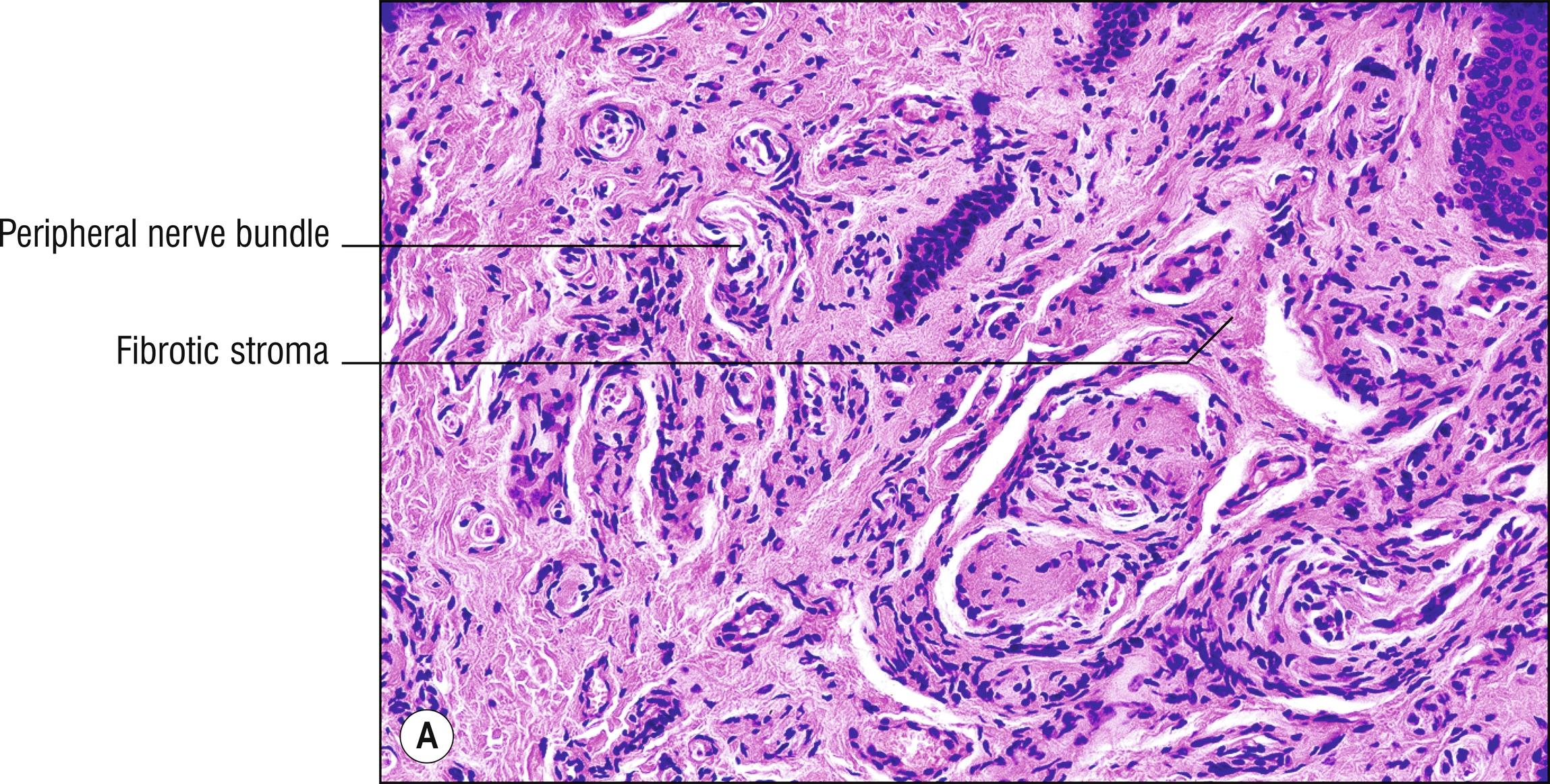


Somewhat common, often painful (1.96), papules or nodules consisting of all of the usual components of a peripheral nerve, including axons and Schwann cells.
Bundles of somewhat well-delineated fascicles of peripheral nerves
Stroma often fibrotic
Positive staining for S-100, myelin basic protein, and neurofilaments
Become a Clinical Tree membership for Full access and enjoy Unlimited articles
If you are a member. Log in here